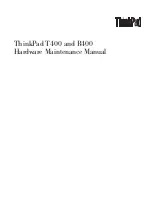
Configuring SNMP
Page 159
Section 12. Configuring
SNMP
Simple Network Management Protocol
(SNMP) provides a method for managing network devices. Equipment
commonly managed with SNMP includes switches, routers and host computers. SNMP is typically used to
configure these devices for proper operation in a network environment, as well as to monitor them to evaluate
performance or detect potential problems.
Managed devices supporting SNMP contain software, which runs locally on the device and is referred to as an
agent. A defined set of variables, known as managed objects, is maintained by the SNMP agent and used to
manage the device. These objects are defined in a Management Information Base (MIB) that provides a standard
presentation of the information controlled by the agent. SNMP defines both the format of the MIB specifications
and the protocol used to access this information over the network.
The switch includes an agent that supports SNMP versions 1, 2c, and 3. This agent continuously monitors the
status of the switch hardware, as well as the traffic passing through its ports. Access to the agent using SNMP v1
and v2c is controlled by community strings. To communicate with the switch, the management station must first
submit a valid community string for authentication.
Access to the switch using SNMPv3 provides additional security features that cover message integrity,
authentication, and encryption; as well as controlling user access to specific areas of the MIB tree.
The SNMPv3 security structure consists of security models, with each model having its own security levels. There
are three security models defined, SNMPv1, SNMPv2c, and SNMPv3. Users are assigned to “groups” that are
defined by a security model and specified security levels. Each group also has a defined security access to set of
MIB objects for reading and writing, which are known as “views.”
The device has a default view (all MIB objects) and default groups defined for security models v1 and v2c. The
following table shows the security models and levels available and the system default settings.
The SNMP agents maintain a list of variables, which are used to manage the device. The variables are defined in
the
Management Information Base
(MIB). The SNMP agent defines the MIB specification format, as well as the
format used to access the information over the network. Access rights to the SNMP agents are controlled by
access strings.
The device is SNMP-compliant and contains an SNMP agent that supports a set of standard and private MIB
variables. Developers of management stations require the exact structure of the MIB tree and receive the
complete private MIBs information before being able to manage the MIBs.
All parameters are manageable from any SNMP management platform, except the SNMP management station IP
address and community (community name and access rights). The SNMP management access to the device is
disabled if no community strings exist.
This section contains the following topics:
•
Enabling SNMP
•
Defining SNMP Communities
•
Defining SNMP Groups
•
Defining SNMP Users
•
Defining SNMP Views
•
Defining Notification Recipients
•
Defining Notification Filters
















































